All products featured are independently chosen by us. However, SoundGuys may receive a commission on orders placed through its retail links. See our ethics statement.
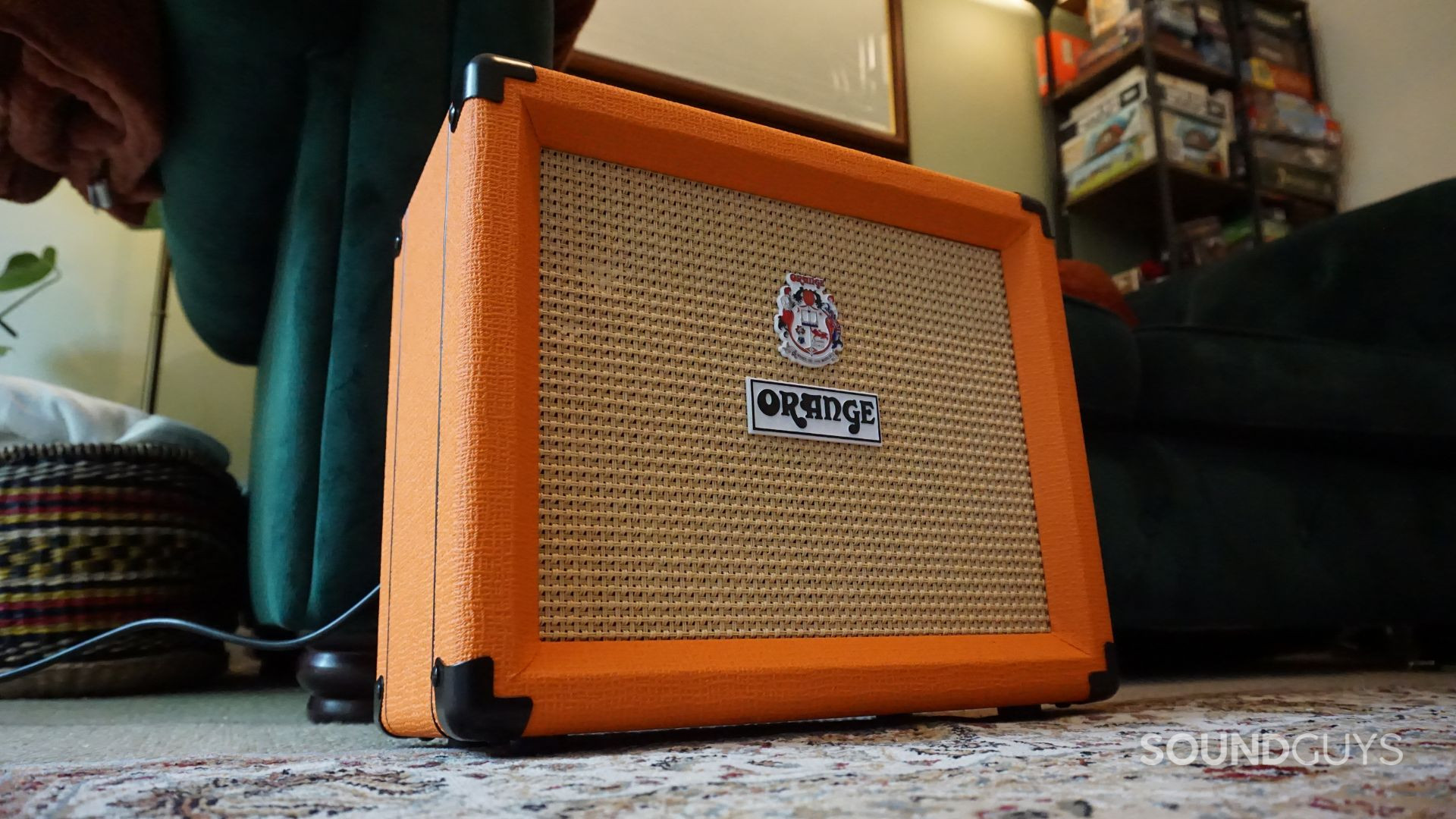

Orange Crush 20RT review: A powerful, no-frills practice amp
May 31, 2025


Orange Crush 20RT
Weight: 7,099.0g
British manufacturer Orange is home to some of the most famous guitar amplifiers in the world. Released in 2015, the Orange Crush 20RT remains a trusted and affordable practice amp for budding musicians. With an intuitive design and pleasing sound quality, we’ve tested how it compares to its siblings and the wider competition. Do guitarists of all different calibres receive the necessary features for rehearsals, gigs, and honing their craft, or has Orange shackled itself to a single specific use? Find out in our Orange Crush 20RT review.
This article was published on May 31, 2025, and this is the first version of the article. Updates will follow as the market changes.
What I like about the Orange Crush 20RT
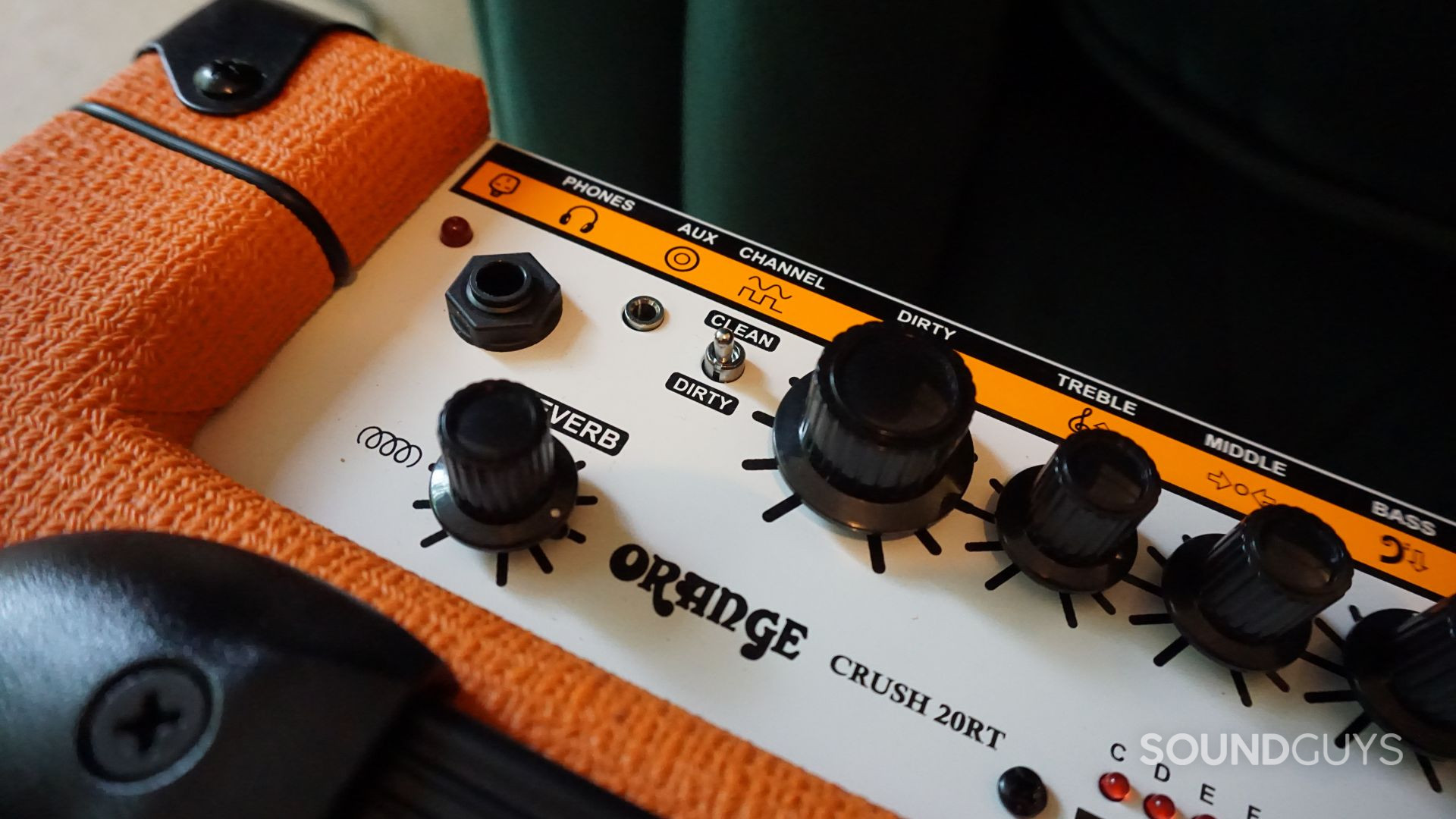
Synonymous with Orange amplifiers, the Crush 20RT ships in eye-catching orange, black, and white colorways. The basketweave vinyl, birch plywood cabinet feels robust underhand, and the 7099g frame is easily portable for rehearsals and shows. The main panel atop the amp controls all the amplifier’s parameters, including dirty and clean channel volumes, a 3-band EQ, and gain. There is also a “spring-inspired” reverb for getting acquainted with time-based effects. The rotaries feel pleasing to adjust, with just enough resistance to avoid accidental changes on the move.
Carving out an iconic, distorted tone is easy thanks to the amp’s breadth of available gain. For example, setting the relevant knob to 7 o’clock awards a subtle, rumbling overdrive that’s suitable for soft rock and blues. Conversely, cranking the gain knob to maximum unlocks an unruly level of distortion for metal and prog rockers. Sure, the amp’s 20-watt power output can’t hold a candle to a Marshall JCM 800 stack. However, I found it more than loud enough for practice sessions at home during the review period. Even with the dirty channel volume at 9 o’clock, the Crush 20RT is a powerhouse. With plentiful headroom, the amp should handle quieter gigs in fringe music venues.
The Crush 20RT should provide enough output volume for quieter gigs in fringe music venues.
Guitarists looking to sculpt their sound further should use the bass, mid, and treble knobs. These offer a wide range of adjustments for cutting or boosting frequencies. From full-bodied, bluesy tones to squealing lead lines, there’s plenty of customization here. I didn’t miss the commonly-found presence knob of competing guitar amplifiers. Likewise, players can add an etherial flavor to their playing by using the on-board reverb knob. This handles anything from a short, spring-like decay to an ambient medium-sized hall. It partners particularly well with the clean channel and helps to achieve classic, warm-sounding guitar tones.
The back of the Orange Crush 20RT reveals a footswitch port for seamless channel switching. This supports any one-button latching footswitch with a TS-type 1/4-inch jack. For example, connecting the Orange FS-1 will disengage the channel switch on the top panel and illuminate when the clean channel is selected. There’s also an AUX-in jack, allowing you to link supported media players to jam along to your favorite tracks. Players wanting to spare their housemates can utilize the 1/4-inch headphone output, and those in a bind can tune up with the onboard chromatic tuner. This uses red and green LED lights to indicate each string’s tuning relative to a particular note.
What I don’t like about the Orange Crush 20RT
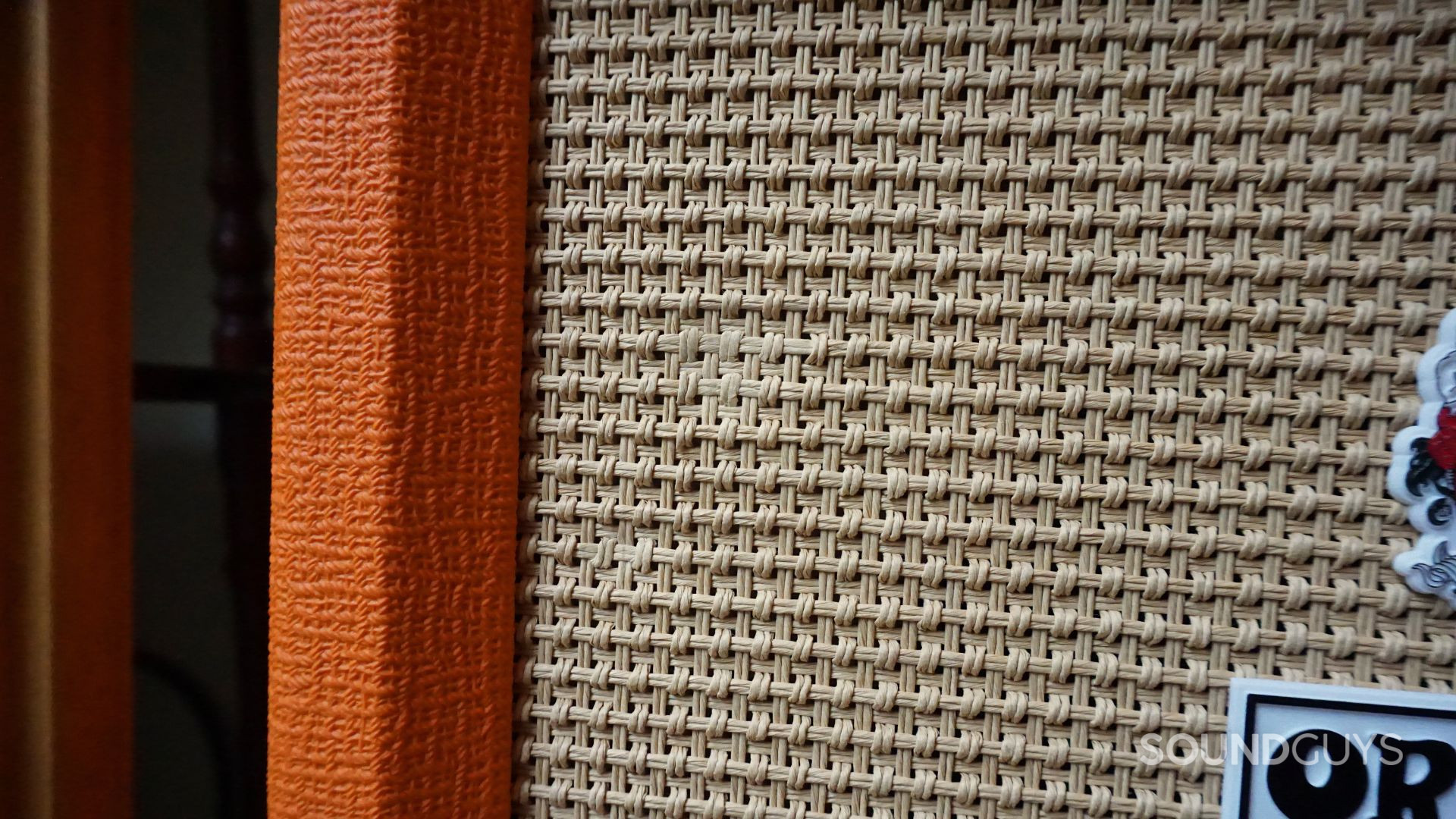
However, while the built-in tuner is undeniably handy for quick tune-ups, it isn’t the most accurate. In particular, the tuner’s apparent insensitivity and limited LED display make it all too easy to tune strings a few cents away from perfect pitch. To be sure, I tested the Orange Crush 20RT against my TC Electronic PolyTune 2. After tuning my guitar with the Crush 20RT, my PolyTune would frequently show that most strings were tuned slightly out of the desired pitch. Activating the Crush 20RT’s tuner also doesn’t mute the main output, meaning everyone around you will hear you tuning up. This seems like a misstep and will likely force many touring guitarists to forgo the Crush 20RT’s built-in tuner altogether.
Another gripe I have with the Orange Crush 20RT centers around the headphone port. While it is useful for silent practice, the amp sounds markedly different when listening over headphones. Orange claims the headphone port features a CabSim modeled on the sound of a mic’d Orange 4×12-inch cabinet. However, the real-world sound it delivers overemphasizes treble frequencies far more than I would like. Playing lead lines higher up the neck often produces harsh-sounding overtones that quickly cause ear fatigue. This is most acute when playing on the clean channel, requiring a drastic cut to treble frequencies with the amp’s treble EQ knob. Those accustomed to their sound during silent practice may struggle to emulate their well-rehearsed tones in live environments.
The Crush 20RT sounds markedly different through Orange's 8-inch Voice of the World speaker than through wired headphones.
Orange’s bright and bold aesthetic is one of the many reasons guitarists love the brand. Unfortunately, its infamous woven speaker grille is susceptible to scuffs and marks. While the white variant ships with a black speaker grille, the black and orange cabinets opt for a tan-colored grille. This showcases stains more easily than the white model and is subsequently less suitable for touring. Similarly, as demonstrated in the image above, the Orange grilles use woven paper material that compresses when subjected to horizontal force. While this shouldn’t affect sound quality, fashion-conscious musicians may question if the Crush 20RT can handle regular transport.
Finally, those wanting all of the bells and whistles of modern modeling amps may feel shortchanged by the Orange Crush 20RT. Unlike competing brands, the Crush 20RT is less adept at finding “your sound”. There are no delay, compression, tremolo, phaser, or octave effects baked in, and the included reverb is comparatively limited. Likewise, the Orange Crush 20RT cannot be customized with a companion app. The lack of Bluetooth connectivity means you must own a device with a headphone port to play tracks on the amplifier. Likewise, the absence of an effects loop means those wanting to run effects after the amp’s preamp gain but before the power amp have their hands tied.
How does the Orange Crush 20RT sound?
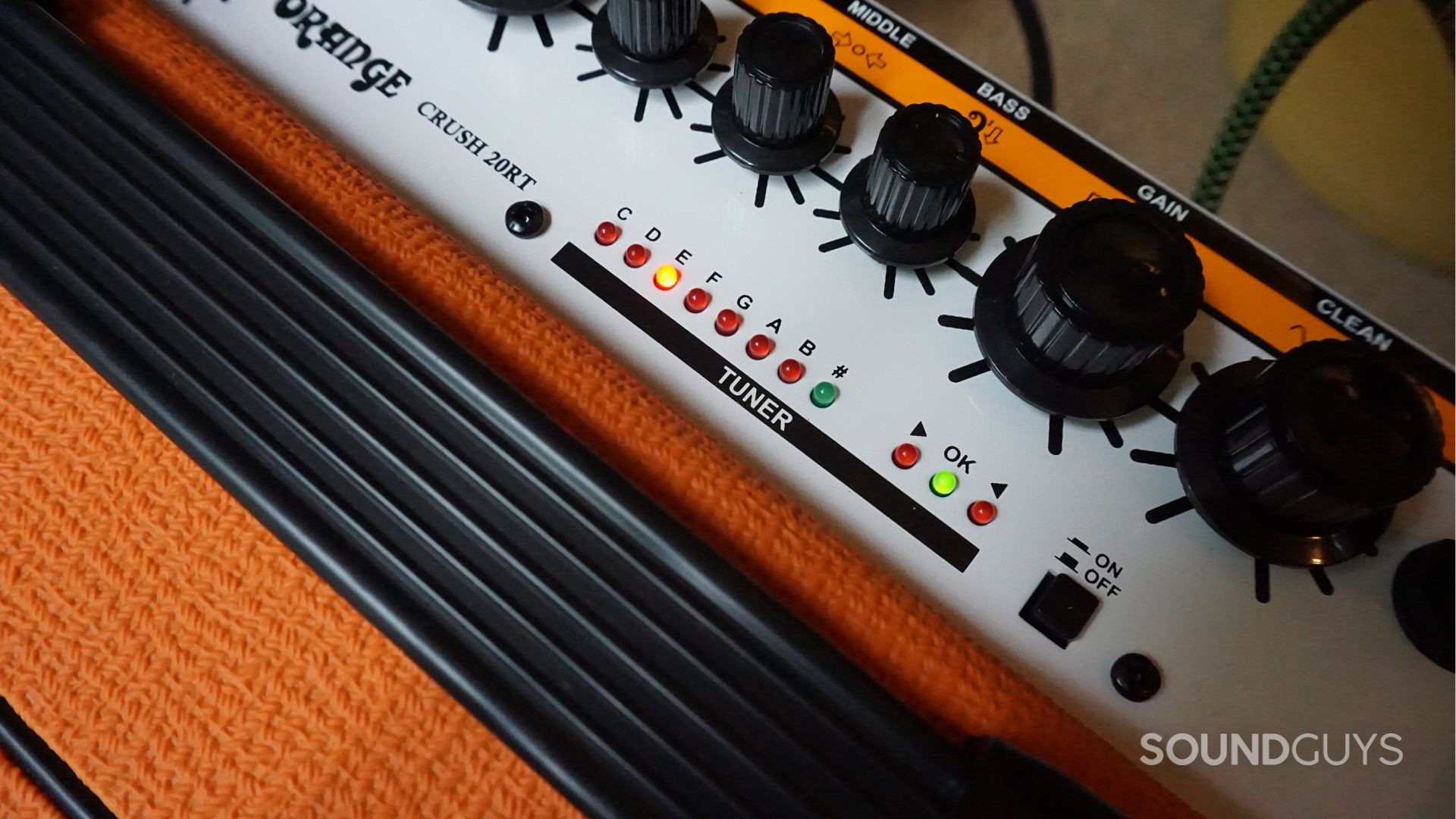
The Orange Crush 20RT offers excellent clean and distorted tones for the price. While the Crush 20RT can’t compete with higher-end siblings like the Orange OR15, it excels among similar solid state practice amplifiers. From mid-heavy blues tones to screaming riffs, the Crush 20RT delivers in bucket loads. Beginners will appreciate the 1/4-inch headphone port and onboard tuner. Likewise, experimentalists can use the reverb knob to dial in ambience.
Below are three samples: one played on the amp’s clean channel and two recorded on the dirty channel with different levels of gain. I recorded each sample with a Fender American Deluxe Telecaster guitar in mono, using the 1/4-inch headphone output on the top panel of the Crush 20RT. Take a listen below.
Orange Crush 20RT Clean channel sample
Orange Crush 20RT Dirty channel (midnight gain) sample
Orange Crush 20RT Dirty channel (maximum gain) sample
To showcase each sample fairly, I set the treble, mid, and bass knobs to midnight and left my guitar on the neck pickup.
Orange Crush 20RT specs
| Orange Crush 20RT | |
|---|---|
Size | 200 x 350 x 400 mm |
Weight | 7,099g |
Connection | Wired |
Controls | Knobs, switches, and tactile buttons. |
Audio inputs | 1/4" TS jack 3.5mm aux TRS jack Single-button footswitch |
Audio outputs | 1/4" TRS headphone |
Wireless audio connection | N/A |
Power connector | IEC mains |
Price | $219 |
Should you buy the Orange Crush 20RT?
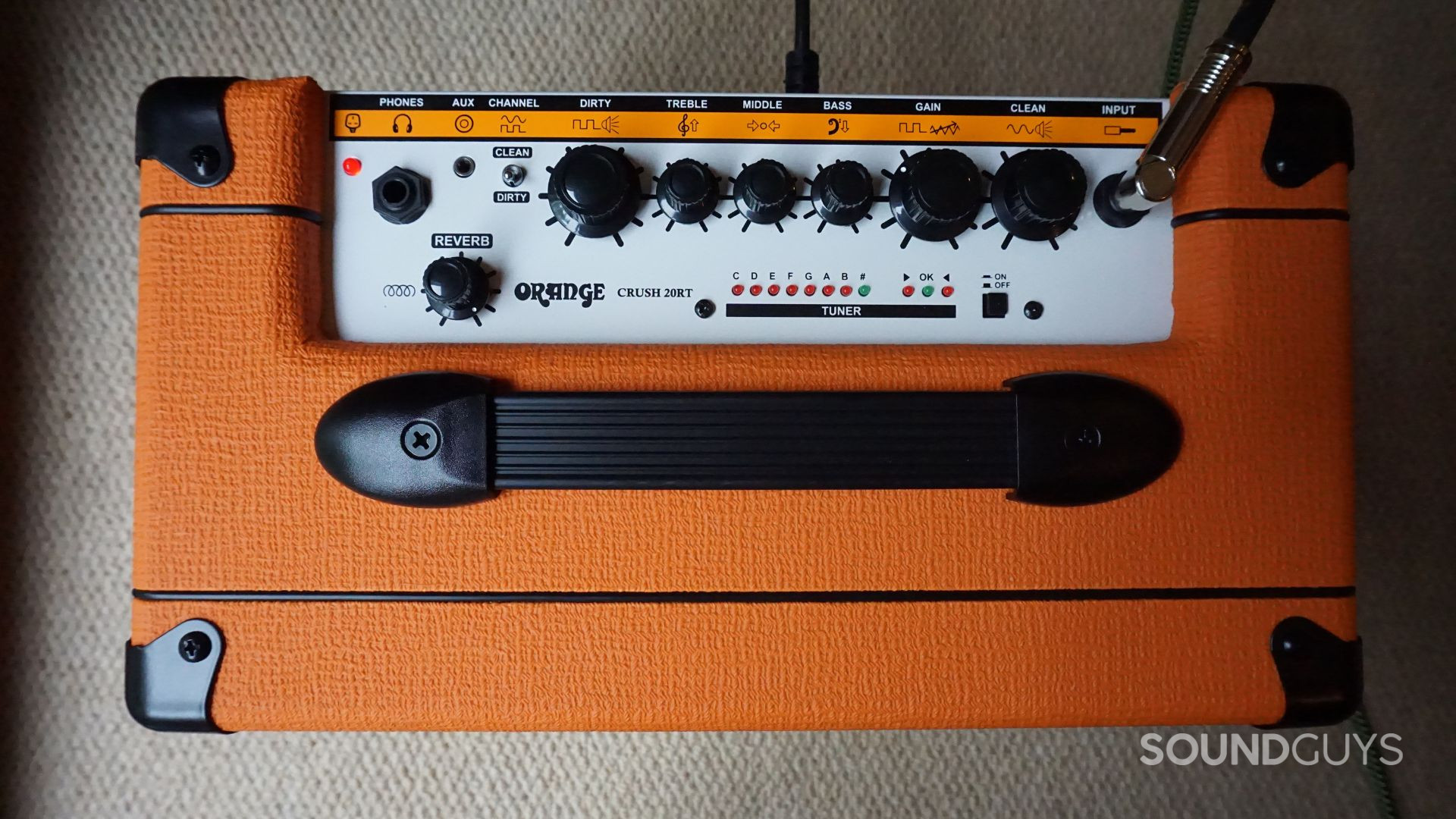
In a nutshell, yes, provided you already like the Orange Amps “sound”. The Crush 20RT meets its mission statement, delivering a wide mix of clean, overdriven, and distorted tones. The amp surrenders all the bells and whistles of modeling amplifiers in return for a simple user experience and portability. The onboard tuner is handy for beginners, and the 3-band EQ knobs are affective for honing your sound. Those living in quiet environments can practice silently with the headphone output, and the AUX input is handy for jamming along to backing tracks. However, the omission of comprehensive customization tools may leave some wanting.
Those looking for the best playability-to-versatility ratio should consider the Fender Mustang LT25 ($159.99 at Amazon). This is one of the best practice amplifiers for guitarists owing to its 30 default presets and 20 amplifier emulations. Downloading the Fender Tone companion app unlocks additional editing tools and vital firmware updates. The encoder wheel is easy to use, and the full-color LED screen simplifies the user experience when navigating dozens of parameters. Fender offers free introductory guitar lessons on its website with every registered account for the LT25.
The Orange Crush 20RT is one of the best-sounding practice amplifiers on the market, but it isn't the most versatile.
The BOSS KATANA-50 Gen 3 ($349.99 at Amazon) amplifier packs a punch with its 50-watt power output and 12-inch speaker. The amp boasts six unique amp characters, each with a selectable variation, unlocking 12 distinctive tones. Effects lovers can tinker around with built-in booster, delay, reverb, and modulation effects. Likewise, downloading the BOSS Tone Studio companion app provides vital firmware updates, graphic customizations, three-way contour controls, and multiple EQ options. One of the amp’s best features is its compatibility with BOSS Tone Exchange. Here, guitarists can download their favorite artists’ guitar tones and share their own with the BOSS Katana community. Home recordists will appreciate USB-C connectivity, and the amp’s Power Amp input can be used to amplify any modeler or external preamp.
Those wanting a head-spinning amount of digital effects at their fingertips should grab the Line 6 Spider V 30 MkII ($239.99 at Amazon). With over 200 built-in amps, cabinets, and effects and 128 presets, guitarists from all walks of life have plenty to play with. Unlike its predecessor, the MkII has Classic Speaker mode and FRFR functionality. The latter provides hi-fidelity, clean monitor-like sound that excels at acoustic playing. The Spiver V 30 MkII benefits beginners with its built-in tuner, metronome, jam-along, and drum loop functions. It also features direct XLR stereo outputs for home recording. Like the BOSS KATANA-50 Gen 3, the Spider V 30 MkII works with the Spider V Remote app for easier amp control, additional settings, and firmware updates.


Orange Crush 20RT review: FAQs
Yes, provided you like the Orange Amps "sound". Unlike modern modeling amps, the Orange Crush 20RT delivers its iconic, versatile overdriven tones with its four stages of gain. This is controlled with the simple and intuitive control panel atop the amp. Those who want to practice privately will appreciate the headphone port, and beginners can tune up with the built-in tuner. However, the amp is less suited for large concerts and those needing many digital effects at their fingertips.
No, the Orange Crush 20RT does not have an effects loop.
Orange manufactures some of the most iconic guitar amplifiers on the market. For example, the Orange Crush 20RT is a favorite among beginners thanks to its powerful sound profile and simple user experience. Likewise, the Orange OR15 is a powerhouse amplifier that delivers versatile tones from blues to heavy metal.
Yes, the Orange Crush 20 has a distortion channel. Ensure you have selected the dirty channel with the relevant switch and that the gain knob is turned clockwise.
Thank you for being part of our community. Read our Comment Policy before posting.